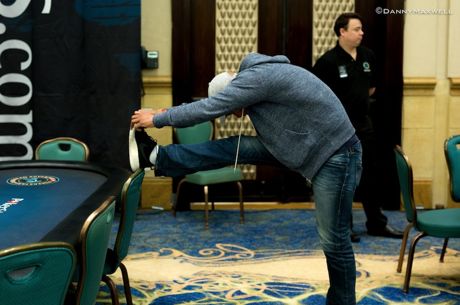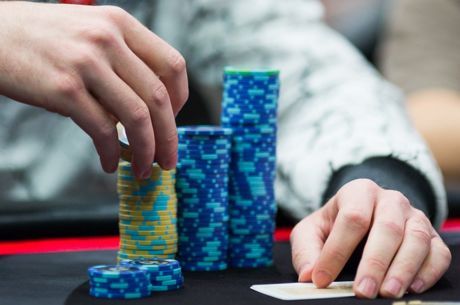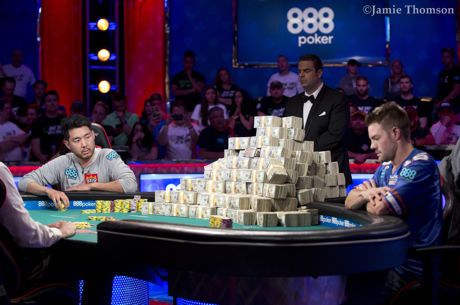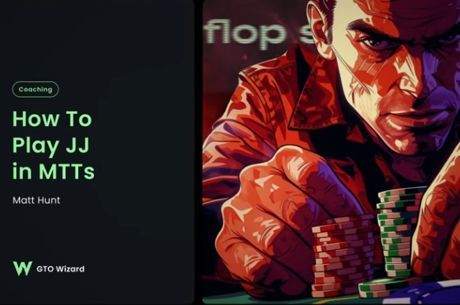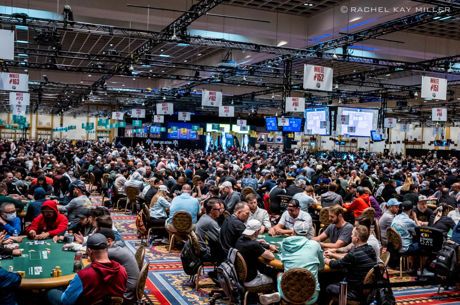His and Hers Poker: A Hand Against 'Inelastigirl'
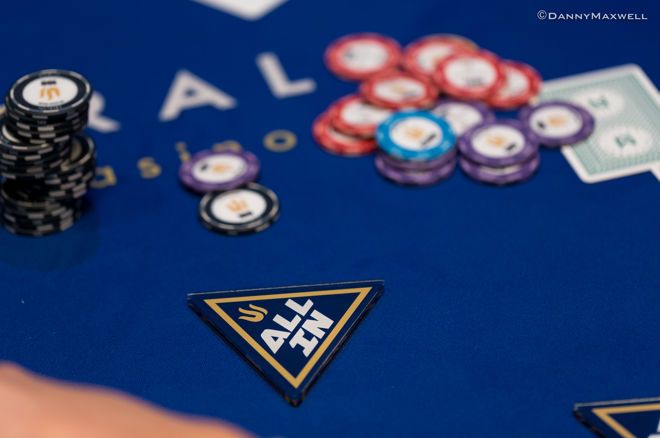
Hello, Poker Friends! This week we are going to examine a concept which can help you make your play "incredible" �� elasticity.
The Table and Villain(s)
Hero (Matt) is at a $2/$5 table at the Borgata. The table is mostly populated by players knocked out of the Borgata Summer Open tournament event du jour. The Main Villain falls into this category. She is a woman in her early 50s with jewelry and a Jersey Shore tan. Her play is loose, passive, and noticeably quick. She seems to decide quickly if she has a holding with which she intends to call off.
Effective Stacks: ~$1,485 (Villain).
Preflop
Action
The player under the gun limps for $5. The next player calls. It folds to the Villain who calls from the middle position. The hijack and cutoff both fold.
Hero is on the button who after looking down at J?8? also calls the limp. The small blind folds, then the big blind raises to $30. The player under the gun folds, UTG+1 calls, as does the Villain. Hero calls as well.
Analysis
In our last article, we decried the dangers of open-limping �� that is, limping when the action has folded to you. Calling after several other players have limped �� or "limping behind" �� is another matter entirely.
Limping behind can be a fine option if several conditions are met. First, you probably should only do so from the button, as you want to guarantee that you will have position on the entire field. Second, you want to have a suited and connected drawing hand that plays fine in a multi-way pot. If you have a high-card hand which plays better heads-up, you should not pass on the chance to isolate by raising.
Finally, when limping behind you should have a hand that you wouldn't mind defending against a raise, but would hesitate to defend versus a three-bet. J?8? on the button seems to meet all of these criteria, which is why Hero limps behind and then calls the raise with a drawing hand while getting 4-to-1 odds in position.
Flop
Action
With $127 in the pot, the flop comes down 10?6?2?. All three players check to Hero who bets $55. The Villain is the only caller.
Analysis
With a flush draw, backdoor straight possibilities, and an overcard, this is certainly a fine spot to bet after everyone checks. In hindsight, a larger sizing is probably warranted. We want to begin to apply maximum fold pressure right from the flop and use a bet size that lets us set up larger barrels on future streets. Something like $75 would probably have been better.
Turn
Action
Now with $237 in the pot, the turn brings the 9?, making the board 10?6?2?9?. The Villain checks to Hero, who bets $150. Villain quickly calls.
Analysis
Luckily, our Hero wises up and makes a larger bet (relative to the pot) after turning the gin card for additional drawing equity (having picked up the open-ended straight draw).
Snap-calls on the turn from loose-passive players almost uniformly mean they have either top pair or a good draw. Both of those holdings require little thought in their mind. If they have a value hand worse than top pair, they might take a moment to consider a fold. If they have a monster, they might ponder a raise.
Here we should expect Villain has a decent 10xXx or her own draw to the flush or straight (or both).
River
Action
The pot is now $537. The river is the 7?, making the completed board 10?6?2?9?7? and giving Hero the nut straight.
Villain donk leads for $100. Villain has $1,150 remaining in her stack and Hero has her covered. Hero shoves. Villain thinks for less than a second before snapping out a chip for the call and tabling 10?8?. Hero flips over his J?8? and scoops the $3,037 pot.
Analysis
There are very few sure things in poker, but Villain having an eight here is one of them. When a passive player donk leads the river after an obvious draw completes, it is with that draw having completed about 99.9 percent of the time. The reason is clear �� greed. Villain is terrified that Hero will check back and she will make nothing with her straight. Her "please call me" sizing makes it an absolute certainty.
We're definitely raising in response. But the key question is how much? I think many low stakes players would robotically raise to a "standard size" of around $400. However, that would be an error.
"Elasticity" is a concept which has its roots in economics. Specifically, it deals with how much to charge for an item. Elasticity measures how much less likely you are to buy something if the price goes up by a certain amount.
Let's say you really want that new smart phone model and wait in line all day for it. If they charge you an extra $50, are you going to walk away? No way! How about if they tacked on $300? Maybe now you don't buy it�� or maybe you still do. There's some point at which you won't buy, but it's clearly going to take a lot of money before you get there. In that situation, we say you are relatively inelastic to the price increase.
Everything in this hand points to the Villain being inelastic. She's the opposite of "Elastigirl" in the Incredibles movies who has the superpower to stretch and reshape her body in all sorts of ways. If there's a price increase, she's probably not going to "bend" away from her decision to call.
Here Villain has the second nuts. She normally acts quickly and she just donk led. If we shove, is she less likely to call than if we raise to $400? Quite possibly. However, that's not the point. The point is how much less likely?
Let's say that she will call a raise of $300 (to $400 total) with 100 percent certainty. By comparison, let's estimate that she will call the shove (for $1,150 more, total of $1,250) only 70 percent of the time. To figure out the expected value (EV) of each move, we just multiply the gain by the percentage. We compare $300 * 1.00 = $300 EV to $1,150 * 0.70 = $805 EV.
With a little algebra, if we say that $1,150 * Y = $300, then Y = 0.26. That means that the Villain would need to fold the second nuts over 74 percent of the time to make the $400 raise better than the shove.
Is Villain laying down an eight even half the time? Clearly not. Shoving is the massively superior line here.
The Takeaway
If you find yourself with the nuts on the river and against an opponent whom you suspect is inelastic to your bet sizing, you should shove, even for a huge sizing. If you don't, you are leaving a pile of EV on the table.
Everyone can tell that they made a mistake when they make a poor hero call and lose $500. It's much harder to detect a mistake when you lost $500 by not betting enough. Yet the damage to your bottom line is just as real in both cases. You should aim to patch leaks at both ends of the spectrum.
His and Hers Poker is a free, weekly strategy podcast hosted by Matt and Tracey Waldt. They are a married couple who play live cash games on the East Coast. Their podcast focuses on providing practical advice about hand reading, with an emphasis on how to identify and exploit the common leaks and imbalances of low-stakes players. His and Hers Poker can be found on iTunes, Google Play and other podcast services. For more information, and to subscribe, please visit hisandherspoker.com.

